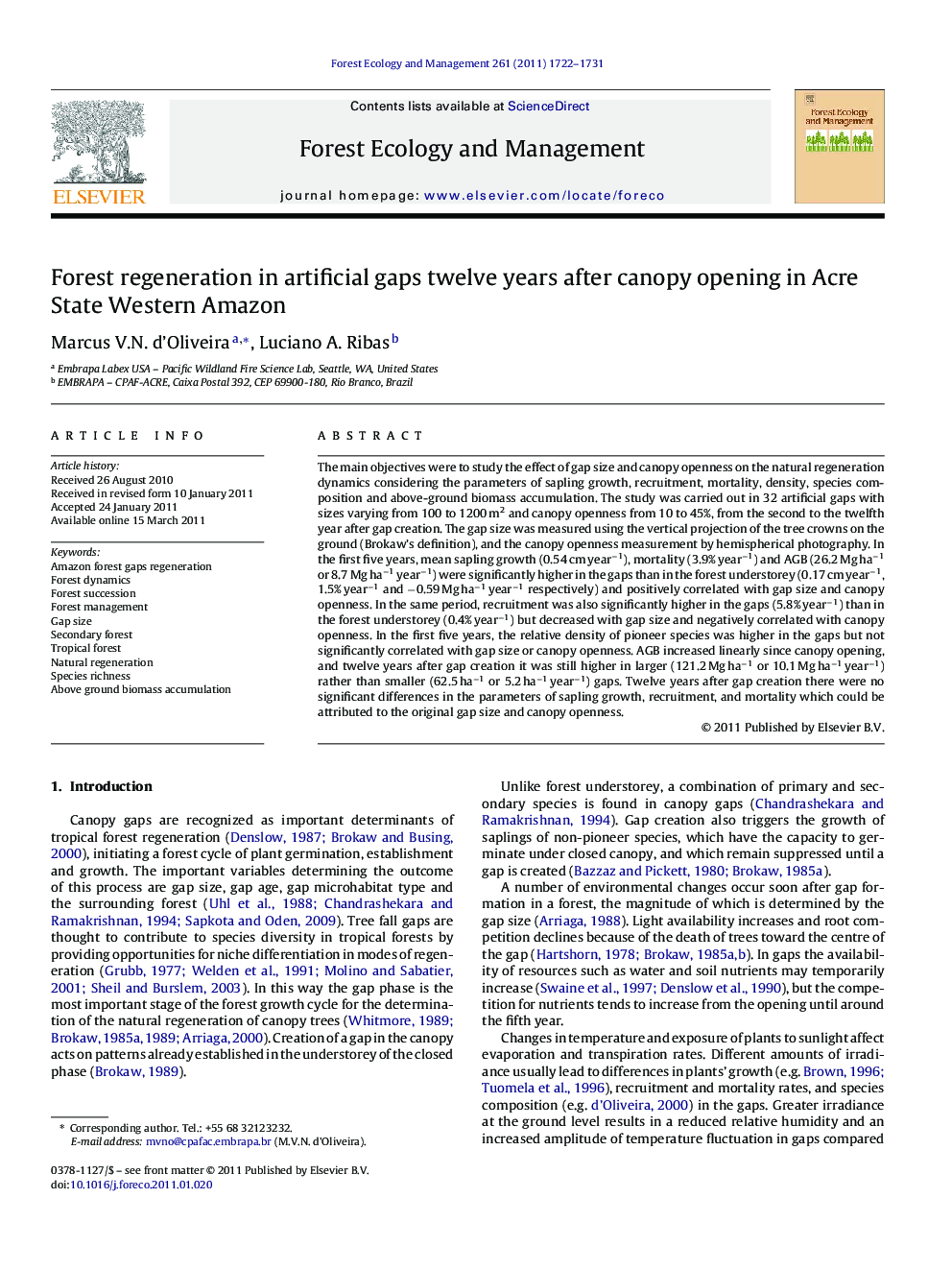| Article ID | Journal | Published Year | Pages | File Type |
|---|---|---|---|---|
| 87861 | Forest Ecology and Management | 2011 | 10 Pages |
The main objectives were to study the effect of gap size and canopy openness on the natural regeneration dynamics considering the parameters of sapling growth, recruitment, mortality, density, species composition and above-ground biomass accumulation. The study was carried out in 32 artificial gaps with sizes varying from 100 to 1200 m2 and canopy openness from 10 to 45%, from the second to the twelfth year after gap creation. The gap size was measured using the vertical projection of the tree crowns on the ground (Brokaw's definition), and the canopy openness measurement by hemispherical photography. In the first five years, mean sapling growth (0.54 cm year−1), mortality (3.9% year−1) and AGB (26.2 Mg ha−1 or 8.7 Mg ha−1 year−1) were significantly higher in the gaps than in the forest understorey (0.17 cm year−1, 1.5% year−1 and −0.59 Mg ha−1 year−1 respectively) and positively correlated with gap size and canopy openness. In the same period, recruitment was also significantly higher in the gaps (5.8% year−1) than in the forest understorey (0.4% year−1) but decreased with gap size and negatively correlated with canopy openness. In the first five years, the relative density of pioneer species was higher in the gaps but not significantly correlated with gap size or canopy openness. AGB increased linearly since canopy opening, and twelve years after gap creation it was still higher in larger (121.2 Mg ha−1 or 10.1 Mg ha−1 year−1) rather than smaller (62.5 ha−1 or 5.2 ha−1 year−1) gaps. Twelve years after gap creation there were no significant differences in the parameters of sapling growth, recruitment, and mortality which could be attributed to the original gap size and canopy openness.
► The manuscript presents a long term comparison of the regeneration in different gap sizes. ► In the first five years, growth, mortality and recruitment were higher in the larger gaps. ► AGB increased linearly after gap creation varying from 5.2 to 10.1 Mg ha−1 yr−1. ► Gaps of 800 m2 or 27% of canopy openness produced the best results during the period.
